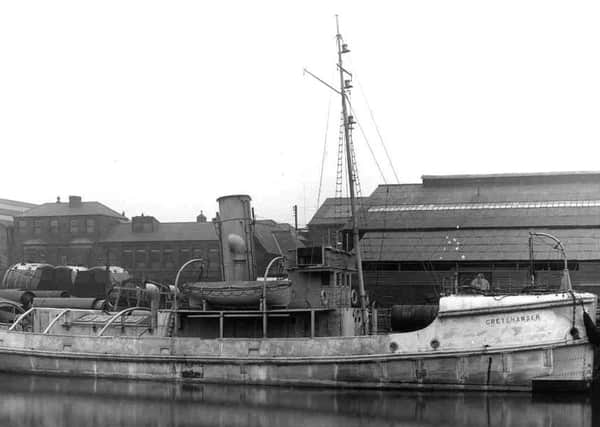Waterfront echoes fore the River Wear in 1919


On January 30, 1919, a stray mine washed ashore on Hendon beach, exploded with tremendous force causing extensive damage to nearby property and injuring a River Wear Commissioners’ workman.
April 10, 1919, saw Rear Admiral William Firth Slayter formally open the Naval War Photographs Exhibition at Sunderland Art Gallery. The exhibition ran until May 11 and was said to include the largest photograph in the world.
Advertisement
Hide AdAdvertisement
Hide AdIn April, 1919, the single-screw steam tug Cretehawser successfully completed trials off the Tees. She had been launched by Wear Concrete Building Co Ltd on March 15 and was one of 12 ferro-concrete Crete-class tugs built for the Admiralty’s Inland Waterway and Dock Department to tow ferro-concrete barges. Construction was supervised by Peter Lind and Co of London, this company later being the main contractor for Corporation Quay. Her triple-expansion steam engine and boiler were built by the Central Marine Engine Works of West Hartlepool. She was the first ferro concrete tug built in England, with sister-vessels Creterope and Cretecable also being built at Southwick in 1919. Her abandoned hulk now lies beached at Hylton.
On May 8, 1919, John Caffrey VC was appointed as a constable with the River Wear Watch. He had earned his Victoria Cross in 1916 while serving with the York and Lancaster Regiment for conspicuous bravery under fire by crossing no-man’s land on three occasions to save wounded colleagues. The Irishman was given the honour of leading the River Wear Police detachment in Sunderland’s 1919 Peace Procession.
On June 25, 1919, Captain Ralph Palliser Milbanke Hudson was elected as a River Wear Commissioner. Son of RWC chairman Ralph Milbank Hudson, he was invalided out of the army while on active service with the 3rd Duke of Wellington’s Regiment. Writing under the pen name of “Peter,” he became well known for his book “Trench yarns.”
On August 27, 1919, the RWC decided to replace two gas engines, which drove the hydraulic power pumps at No 3 Dock Gateway with electric motors. The tender of the British Westinghouse Electric Manufacturer Co Ltd was accepted.
Advertisement
Hide AdAdvertisement
Hide AdDuring 1919, output from the Wear’s 16 shipyards rose to 63 vessels, aggregating 288,662 gross tons. The yards were: SP Austin & Son Ltd, Bartram & Sons Ltd, John Blumer & Co, John Crown & Sons Ltd, William Doxford & Sons Ltd, Sir James Laing & Sons Ltd, Osbourne Graham & Co Ltd, William Pickersgill & Sons Ltd, Priestman & Co, Short Bros Ltd, Sunderland Shipbuilding Co Ltd, Swan Hunter & Wigham Richardson Ltd, Joseph L Thompson and Sons, William Gray & Co (1918) Ltd, Robert Thompson and Sons and Wear Concrete Building Co Ltd.